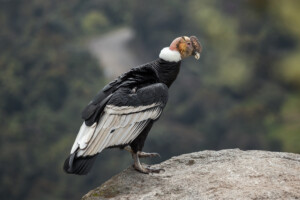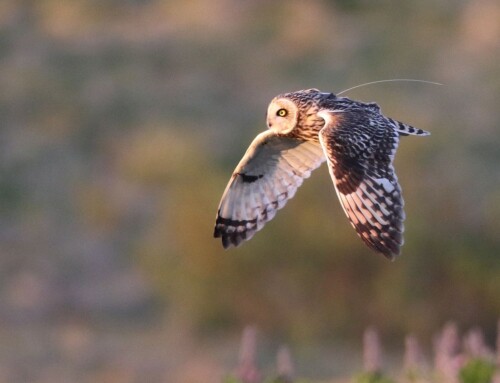 LINKED PAPER
LINKED PAPER
Landfill Use by Andean Condors in Central Chile. Pavez, E.F., Pascual, P., González, B.A. 2023 Journal of Raptor Research. DOI: 10.3356/JRR-22-00051 VIEW
Andean Condors are among the largest birds in the world and as obligate scavengers they rely on carrion for sustenance. In central Chile, human livestock practices strongly influence the distribution of carrion available to Andean Condors. Landfills are predictable, and predictable food sources often alter the movement patterns of wildlife species. Understandably, most animals avoid working hard to find food if they don’t have to and condors are no exception.
Although the presence of landfills can aid condor survival by offering a reliable food source, they can also cause damage at the individual and population levels. Over the course of 17 years at the largest landfill in Chile, Loma Los Colorados, the team observed four poisoning events affecting 14 condors, 8 of which died as a result due to organophosphorus intoxication, however the exact sources were never revealed. Most of the afflicted birds were males, likely because adult males are dominant over other condors at desirable food items. When those choice items are toxic, the males experience the worst of it.
Normally this area hosts the largest known aggregation of Andean Condors at a single site, but condor numbers at the landfill decreased between 2013 and 2016, correlating with widespread cattle mortality due to drought, and rabbit mortality due to myxomatosis disease, both of which increased the availability of food sources (carcasses) in the regional landscape. After 2019 both mortality events subsided, and condor numbers at the landfill increased, indicating that condor numbers at the site fluctuate depending on the movements of grazing livestock across the region. Lead author Eduardo Pavez (Bioamérica Consultores & Union de Ornitólogos de Chile) says that this trend “showed how the presence of condors in landfills is an indicator, a very sensitive barometer, of what is happening with the food supply on a broad geographic scale.”

Figure 1 Adult male Andean Condor, Chile © CC BY-NC-SA 2.0 Andres Bertens.
More juveniles and females (those at the bottom of the social ladder) fed at the landfill than adult males, likely because successful scavenging is more difficult for young birds and subordinate individuals, and landfills offer easier pickings for those who might be bullied off of choice carcasses by adult males elsewhere.
The authors recommend that landfill management companies work to reduce the presence of garbage available to the condors, and implement feeding stations during times of food hardship, primarily during the austral winter. This has been done successfully in central Chile by Pavez’s team and funded by KDM Company. Pavez says that “until recently, companies that managed landfills were blamed for poisoning events and were considered a threat to condors. Today, studies like ours have been possible thanks to the financing of some of these companies, which now want to be part of the solution to the conservation problems of the Andean Condor.”
Andean Condors, like all vultures, are important agents in the recycling of organic material across the landscape. They remove carcasses from the environment, for free, and they do it efficiently. Their continued existence in our skies is a worthwhile priority, not only in central Chile, but across the globe.
Image credit
Top right: Adult male Andean Condor, Colombia © CC BY-NC-SA 2.0 Sergey Pisarevskiy.
If you want to write about your research in #theBOUblog, then please see here.
[/fusion_text][/fusion_builder_column][/fusion_builder_row][/fusion_builder_container]




